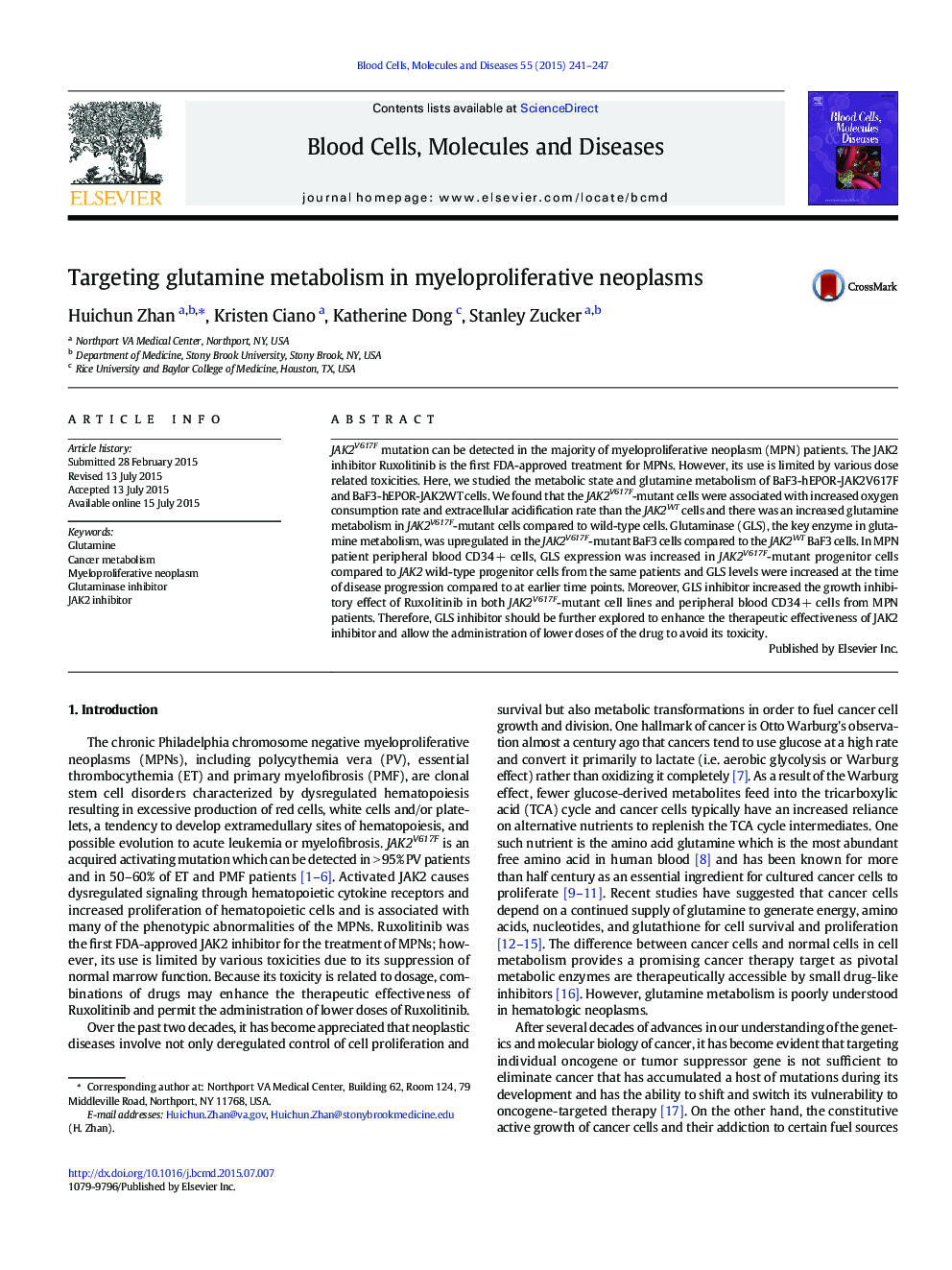| Article ID | Journal | Published Year | Pages | File Type |
|---|---|---|---|---|
| 2827109 | Blood Cells, Molecules, and Diseases | 2015 | 7 Pages |
JAK2V617F mutation can be detected in the majority of myeloproliferative neoplasm (MPN) patients. The JAK2 inhibitor Ruxolitinib is the first FDA-approved treatment for MPNs. However, its use is limited by various dose related toxicities. Here, we studied the metabolic state and glutamine metabolism of BaF3-hEPOR-JAK2V617F and BaF3-hEPOR-JAK2WT cells. We found that the JAK2V617F-mutant cells were associated with increased oxygen consumption rate and extracellular acidification rate than the JAK2WT cells and there was an increased glutamine metabolism in JAK2V617F-mutant cells compared to wild-type cells. Glutaminase (GLS), the key enzyme in glutamine metabolism, was upregulated in the JAK2V617F-mutant BaF3 cells compared to the JAK2WT BaF3 cells. In MPN patient peripheral blood CD34 + cells, GLS expression was increased in JAK2V617F-mutant progenitor cells compared to JAK2 wild-type progenitor cells from the same patients and GLS levels were increased at the time of disease progression compared to at earlier time points. Moreover, GLS inhibitor increased the growth inhibitory effect of Ruxolitinib in both JAK2V617F-mutant cell lines and peripheral blood CD34 + cells from MPN patients. Therefore, GLS inhibitor should be further explored to enhance the therapeutic effectiveness of JAK2 inhibitor and allow the administration of lower doses of the drug to avoid its toxicity.
